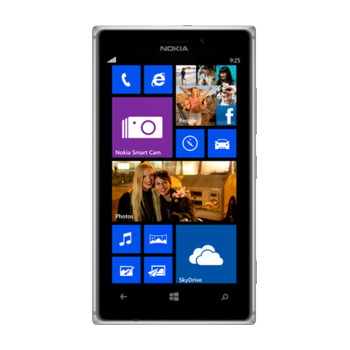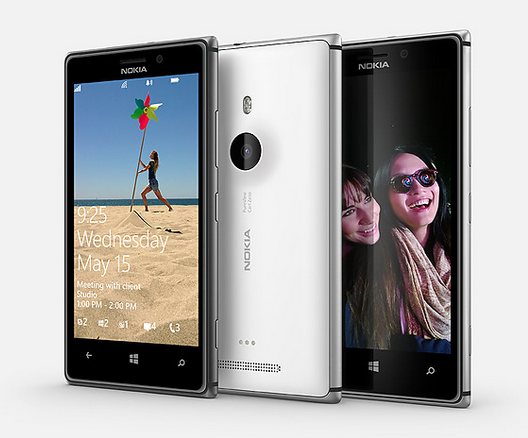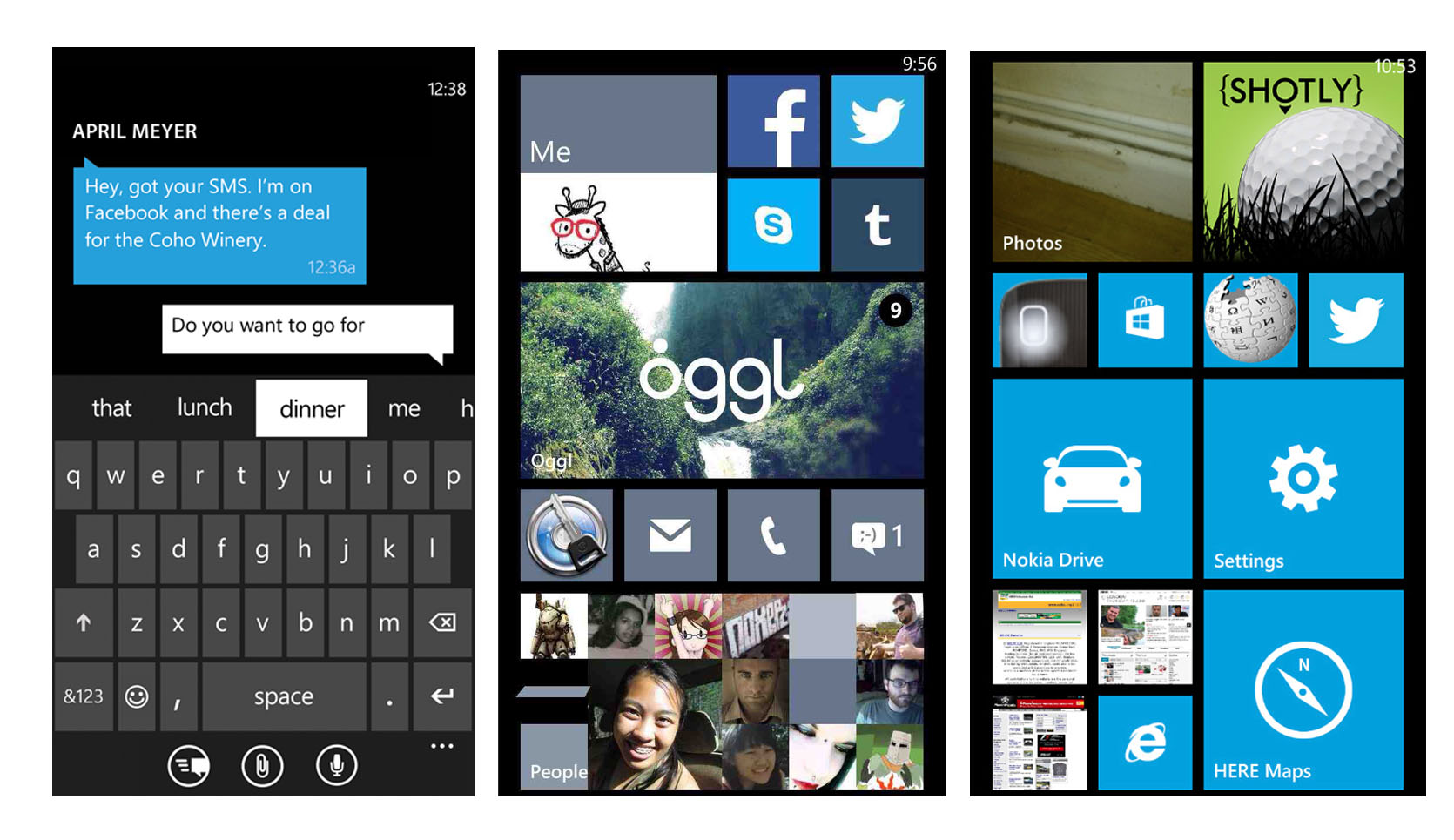
Microsoft has been all-in with the mobile market for awhile now—at least since the release of Windows Phone 8 last October. However, market share is still low—as is developer support. With their recent purchaser of Nokia, however, they are looking to take their efforts to a new level.
As Microsoft’s Windows Phone bannerman, Nokia gave the new platform a coronation to be proud of with the Lumia 920 which was well received by the technology community—perhaps the first Windows Phone to have earned a serious following. A fresh breed of competition is just over the horizon, however, and Nokia has thrown a new competitor into the ring: the Lumia 925.
But can the Lumia series compete with the already established Android/iOS duopoly?
HARDWARE: A design that lives up to Nokia’s reputable tradition
Nokia has always been a brand synonymous with superb build quality. From the legendary Nokia 1100 to their most recent device, the 920, Nokia is the brand that you just can’t break. The solid in-hand feel of the 920 was one of its biggest praises but it also lead to one of the biggest criticisms of the phone: its sheer size. At 10.7 mm thick and weighing 185 grams, the 920 was a tank compared to the lithe 112 gram iPhone 5 or even other Windows Phones such as the HTC 8X and Samsung Ativ S.
The Lumia 925 is a completely different story design-wise. Nokia have trimmed down the handset by removing wireless charging and opting for a slight hump on the back instead of the “Nokia Smile” rounded body of the 920. Polycarbonate is still present on the non-removable back of the device but with a more matte feel that has not lost any of the quality found with the plastics in the 920. To bring an even greater air of quality to the 925, Nokia have trimmed the sides of the device with a solid rim of aluminum. There are are plastic filled gaps in the sides of the ridge for the antenna to broadcast through, but all other pieces of the device along the sides are machined to tightly fit into this rim. Volume and power buttons are located on the right side of the device, comfortably within thumb’s reach and actuate with a solid click that makes using the phone with one hand very comfortable. The top of the device is a bit cluttered with the headphone jack, micro-USB port and micro-SIM tray all squeezed in next to one another and the series of gaps and holes breaks up the phone’s otherwise sleek profile. It’s worth noting that the aluminum rim appears to be much more resilient than any other competitor on the market. I dropped the 925 several times on rough concrete, wood, and tile floors during my time with the device and it is still in pristine condition.

With an unlocked device, the face of the device is sparse and pleasing to the eye, but carrier branding makes even looking at the device slightly painful at times. T-Mobile is the most egregious offender; squeezing their full brand under the traditional Windows Phone capacitive buttons. AT&T has stamped their globe on the top of device opposite the front-facing camera where it seems less forced but still ruins the balance of the device.
Thankfully, no carrier can ruin the display on the 925. Unlike it’s IPS sibling, the 925 sports a 4.5 inch AMOLED display with Nokia’s Puremotion HD+ and ClearBlack technology. Fancy branding aside, the features are meant to minimize ghosting while scrolling on the device and provide the deepest blacks possible which makes the contrast-heavy Windows Phone operating system really pop from the screen. An AMOLED display succeeds in providing deep blacks since the pixels are actually off as opposed to simulating a color but ghosting is fairly prevalent on the 925, especially compared to the 920—and even the iPhone 5.
Color reproduction is also littered with caveats. While things like the Windows Phone start screen are rendered with beautiful, but slightly over-saturated colors (similar to Samsung’s profile on the S4), colors in the browser and other apps appear much more muted. Whites that appear outside of the native apps (text messaging, email, etc.) are yellowish at best which hurts the experience when straying outside of the bubble of Microsoft’s well-tuned apps. All of these problems are made worst the moment you tilt the phone on an angle. The 925’s viewing angles are nothing approaching the level of bad on the Sony Xperia Z, but the screen does glaze over in its entirety if viewed from an off-centered angle.
Windows Phone 8 has earned a reputation for speedy performance, especially compared to Android, and the latest handset in its lineup is no exception. While there is some ghosting to the animation, the 925 never lagged or missed a beat during my time with it. Windows Phone’s animations for opening, closing and switching apps were a minor hinderance but could also be turned off with a quick trip to the settings screen. Games performed as admirably as on any other platform despite the fact that Windows Phone does not support greater than dual core processors at this time. Most games aren’t designed to use more than that anyway and you realize that when using a phone like the 925. The back of the device does get pretty hot during any gaming or heavy browsing. Other devices do this, but on the 925, the heat tends to collect around the earpiece which is unfortunate if you plan on making calls within fifteen minutes of noticing.
The heat may suggest that the phone is burning through battery but that is absolutely not the case. With heavy texting, emailing, gaming (on emulators as well as native apps) and a call here or there, the phone averaged 13 hours of battery life during my time with it. The Windows Phone store is full of apps designed to provide detailed metrics on battery life which make you much more aware of your heavy consumption habits, but staying near a wall outlet was never a thought while on the 925—even when using GPS, which Nokia’s downloadable HERE Maps make no more costly to battery life than scrolling the home screen.
Lumia is a term coined in the 20th century to refer to art created from light and the camera in any Lumia device is capable of upholding this tradition. Nokia revolutionised smartphone camera technology by adding mechanical optical image stabilisation added to the 920 and they’ve taken the best of that new image capturing technology and distilled it into the 925.
Image and video quality on the 925 is superb. Optical image stabilisation is still present and works as well as it did in the 920, making shaky cam a thing of the past. It’s difficult to take a bad picture with the device if you give it time to sort out the details in the background but many situations don’t allow for that. Autofocus tended to ruin many shots I’d take with the camera in hopes of capturing a moment on the fly, but this turned out to be a nondescript bug which a system restore cured. The 925 is still the best low-light camera on the market without question despite Nokia’s opting for an LED flash as opposed to the Xenon in its Verizon cousin the 928. Most situations do not call for a flash at all, but for those that do, Nokia’s Smartcamera app will do most of the work for most users. By taking a burst of images with a range of settings, the app makes sure you get the best shot in any situation, and even lets you add a variety of effects to emphasis the moment wherever you choose to display it.
Software: Lack of apps is still painful, but it’s not Nokia’s fault
Unfortunately, the beautiful image will likely stay on your phone for some time, at least until Windows Phone’s app situation improves. While tales of the platform’s barren nature have been slightly exaggerated from what I can tell, there is certainly a lack of or deficit in quality between the Windows Phone version of common apps and those on other platforms. The Facebook app tended to be sluggish and prone to crashing on the 925 despite Microsoft’s close relationship with the company — they own a notable stake in it. There is also no first party Instagram or Vine app which is a turnoff for many would-be customers. The Lumia line have the best cameras on the market, but what is the point if the most popular photo sharing platform on the planet is not supported?

To combat the lack of apps, developers for the Windows Phone platform have worked hard to create their own solutions to the major gaps in the platform. There’s no first party Vine app, but Twitter have given their blessing to 6sec, a third party solution designed by Rudy Huyn. Huyn has also designed a fully functional Instagram client called 6tag and while Google has blocked all attempts by Microsoft to bring an official Youtube app to the platform, Metrotube and Youtube HD are popular solutions. Even if you don’t like the official apps by Facebook and Twitter, their functionality is baked into Windows Phone 8 through the People hub. These substitutes present great options for those interested in the platform, but are not substitutes. Using another Instagram solution — Instance — resulted in user’s pictures being deleted rather than uploaded due to some tinkering on Instagram’s servers. Instagram went back and fixed the problem after it was brought to their attention, but it was a wake-up call for those who called third-party apps real solutions to the problem on the Windows Phone. If a company does not support these apps, any spring cleaning could result in the destruction of one’s e-life, which could rub a few people the wrong way.
Nokia’s apps plug the many gaps left by the Windows Phone ecosystem on the 925. HERE Maps is left useful if you depend on live traffic updates. But even in terms of basic navigation, I found it more pleasurable to use than even Google Maps because of its ability to monitor local speed limits and download maps to the phone in order to save battery while out and about. Downloading maps is also a necessity if you buy the phone on T-Mobile’s network where network quality across ten miles can peak and valley as unpredictably as the wind. Nokia’s suite of editing and camera apps make their emphasis on camera technology really shine with things like City Lens and editing software which redefine what should be possible with a “smartphone camera.”
Despite platform or carrier issues, the Lumia 925 is a product distilled from the best aspects of the 920. The handset is light, fast, fits nicely into the hand and has camera technology that few other manufacturers come close to. Unfortunately, the 925’s biggest problems are not Nokia’s to solve. The Windows Phone ecosystem has gaps too wide for the average user to venture across and, on T-Mobile, things as simple as sending a text or email are fraught with paranoia because the operating system can take hours to report a failed attempt.
With Microsoft’s purchase of Nokia’s handset making division, we can hope to see the software close its gap with the hardware on the platform in the near future, but they are problems that any 925 speculator should be aware of. Along with the 1020 and rumored 1520, this will be one of the last true Nokia flagship devices—and it lives up to the company’s reputation. It is the last high-end, no gimmicks smartphone that the Finnish legend will release—and if this were the phone that Nokia was to be remembered by, they’d have quite a legacy to leave behind.